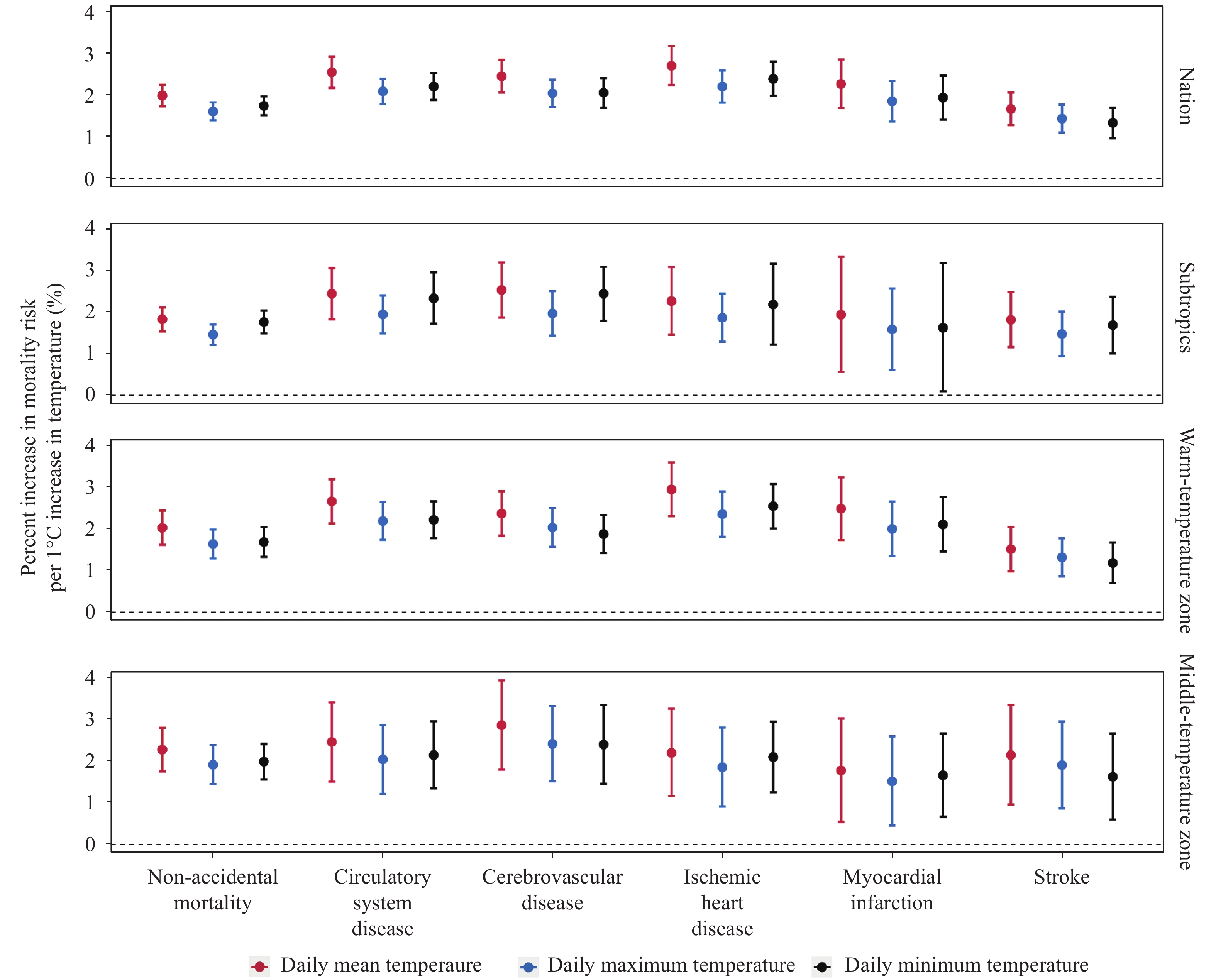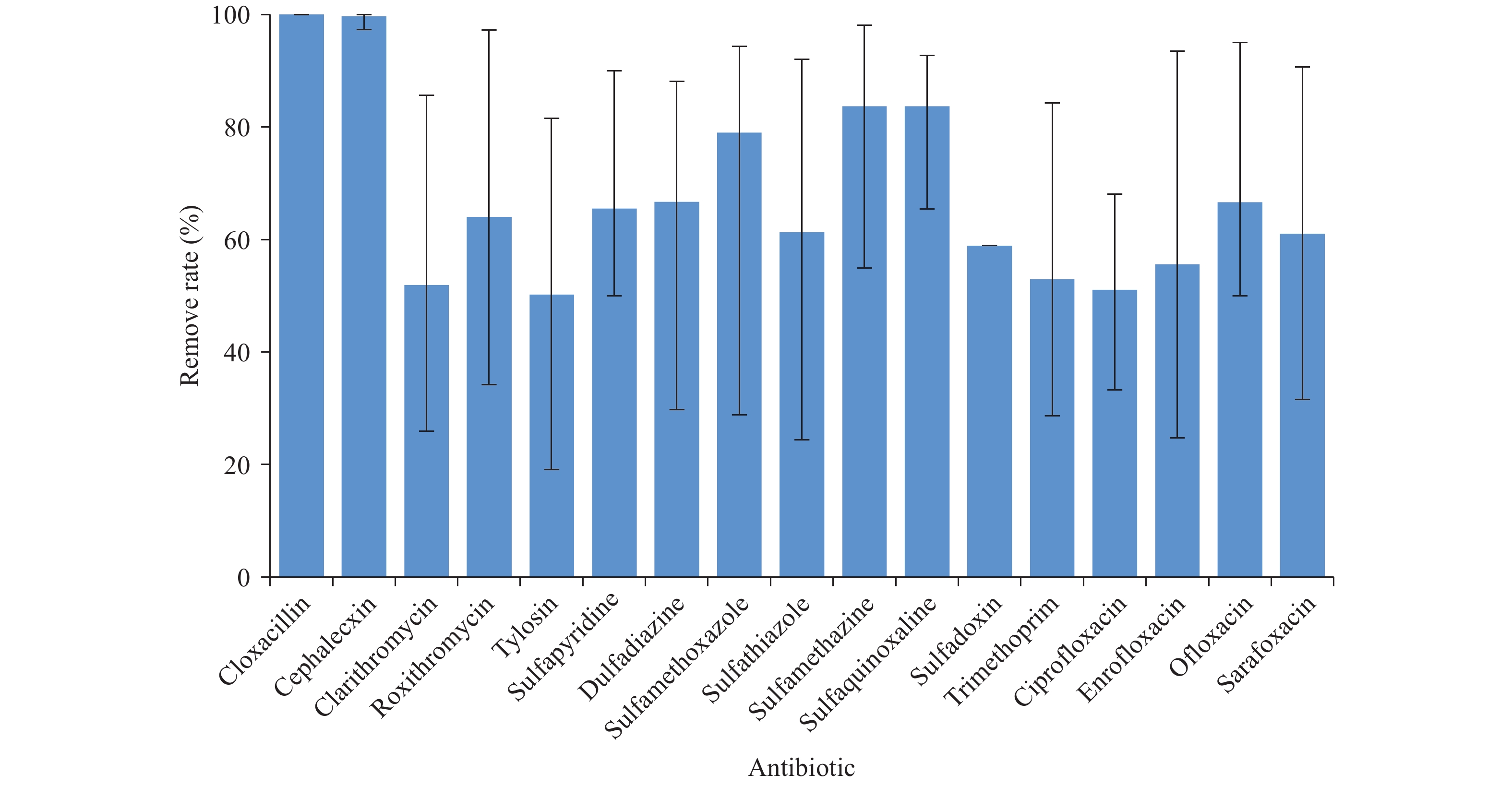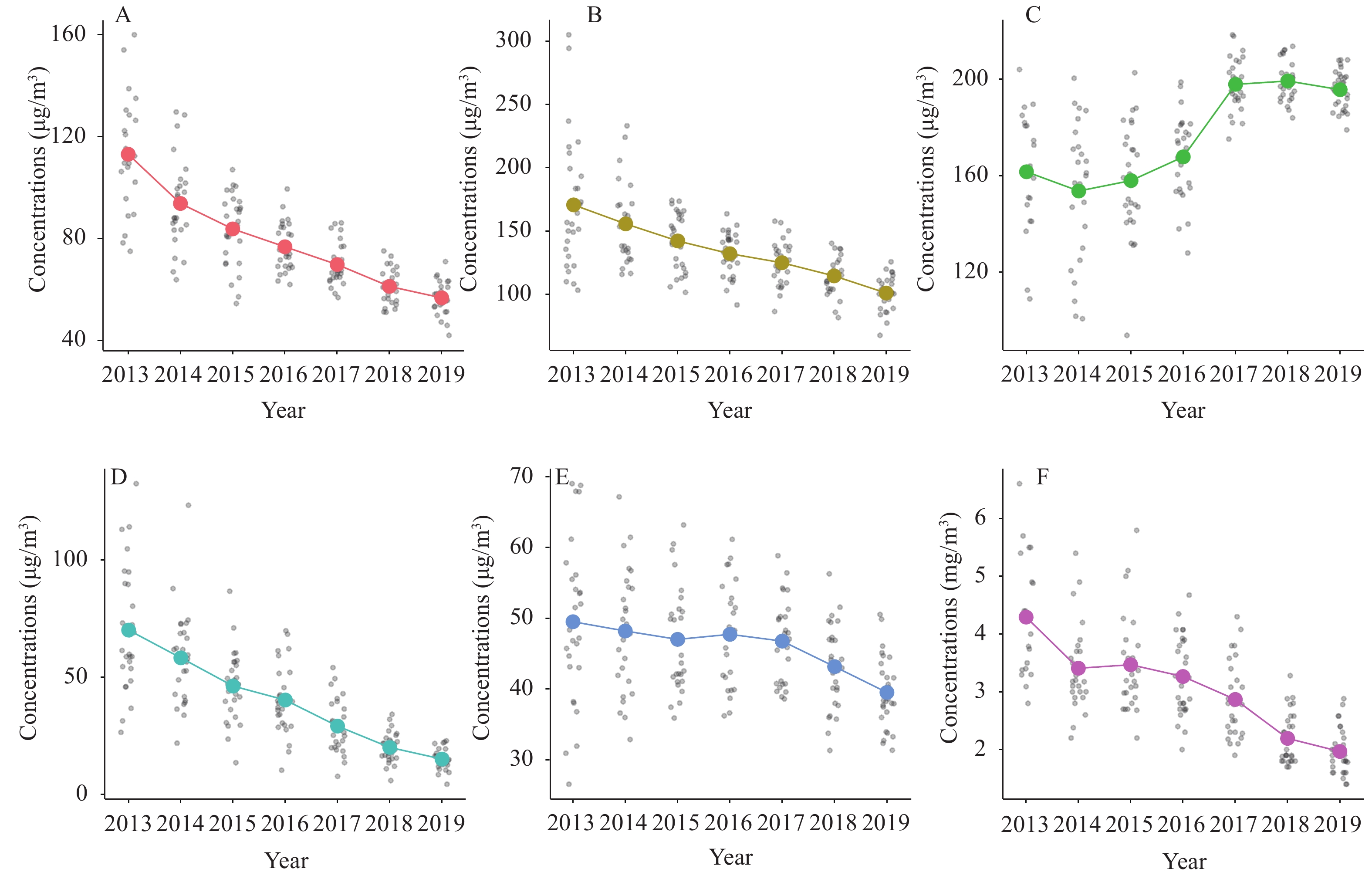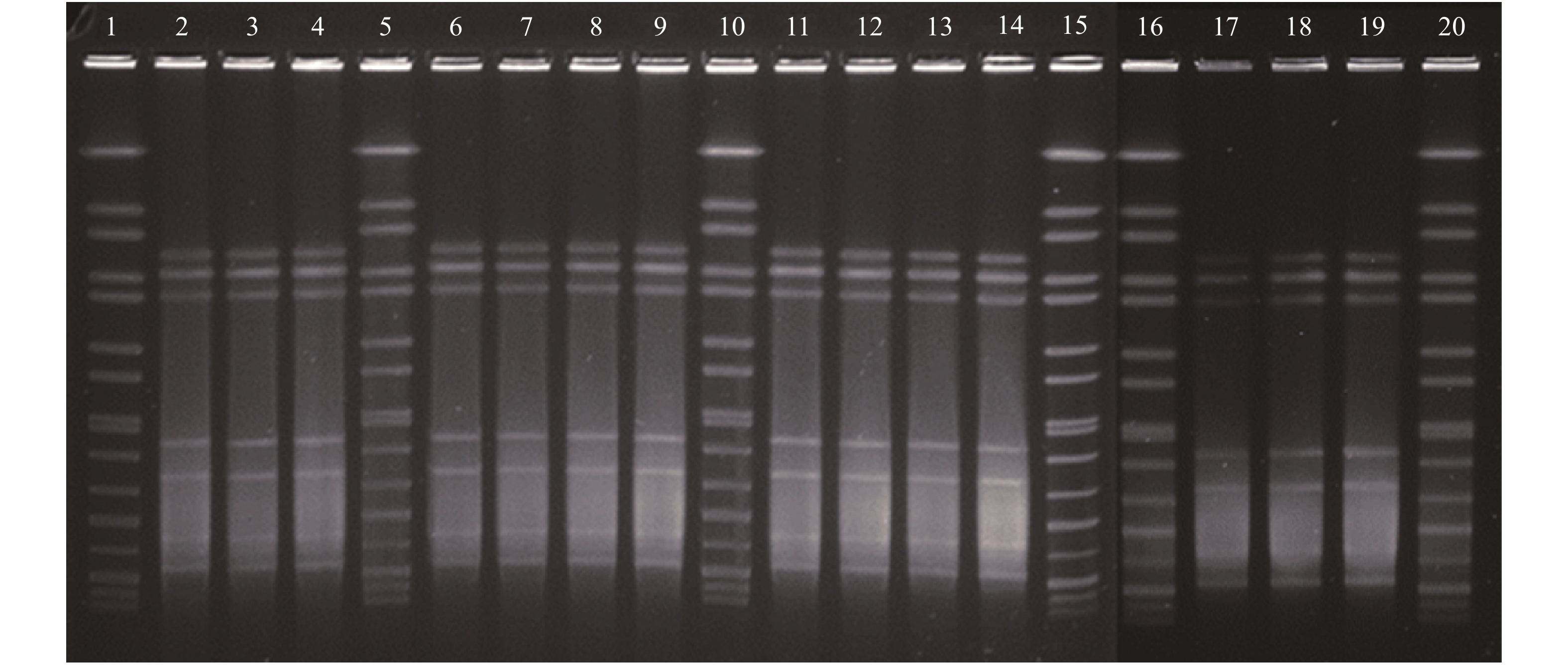2020 Vol. 2, No. 23
What is already known about this topic?
High temperature is a well-recognized public health threat and may increase mortality risks, especially mortality risks involving diseases of the circulatory system.
What is added by this report?
Using a six-year time series analysis, the differences of daily mean, maximum, minimum temperature were explored in assessing the health effects of high temperatures in nationwide and at climatic-zone level, and population groups susceptible to high temperatures were identified.
What are the implications for public health practice?
This study suggests that the daily mean temperature is the optimal indicator for high temperature exposure in heat-related health risk assessments and early warnings. The policy measures of heat-related public health protection should be made considering regional distribution, sensitive diseases, and vulnerable populations.
Antibiotic contaminations in the environment are understood to pose human health risks including disturbing the microbiome in the human body and producing antibiotic-resistant bacteria, which pose serious public health risks. Antibiotics have been detected in aquatic environments and drinking water worldwide.
Contamination levels of antibiotics in raw, finished, and tap water were investigated systematically, to the best of our knowledge, in major Chinese water basins. Multiple antibiotic contaminations in raw water and their incomplete removal during water-treatment processes results in human exposure to antibiotics via drinking water. Human exposure to such antibiotics and its health risks were evaluated in this study.
This study highlights the need to strengthen management of antibiotic exposure from drinking water. A multisectoral action plan at the national level is required to curb the effects of environmental antibiotic pollution.
What is already known about this topic?
Campylobacter genus bacteria are recognized as some of the leading causes of the bacterial diarrheal illness in both developing and developed countries. Recent pilot surveillance study revealed Campylobacter is the most common pathogen in the diarrheal cases using the enhanced filtration methods in Beijing. One outbreak caused by multi-drug resistant Campylobacter coli ( C. coli ) was identified in 2018.
What is added by this report?
This is the first identified gastroenteritis outbreak caused by local Campylobacter jejuni (C. jejuni)
What are the implications for public health practice?
Campylobacter is the major foodborne pathogen in the world. Surveillance and risk assessment for Campylobacter infection particularly for Guillain-Barré Syndrome (GBS) associated C. jejuni infection in China should closely monitored.



 Subscribe for E-mail Alerts
Subscribe for E-mail Alerts CCDC Weekly RSS Feed
CCDC Weekly RSS Feed


